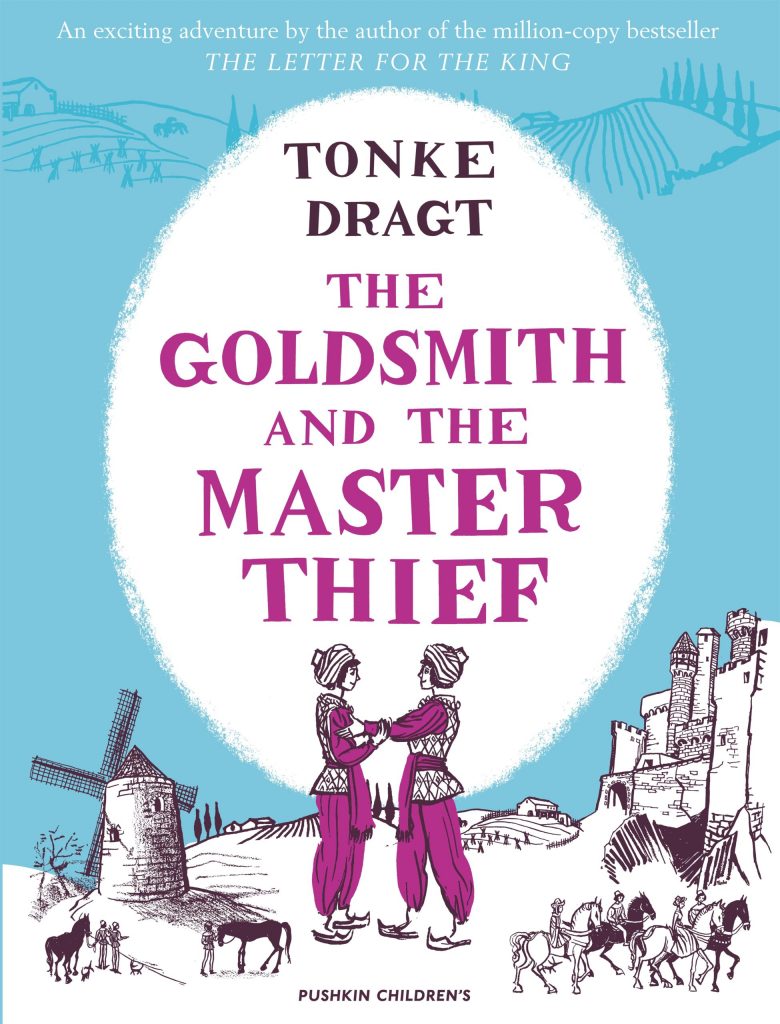“I wrote this story for you, but when I began it I had not realized that girls grow quicker than books. As a result you are already too old for fairy tales, and by the time it is printed and bound you will be older still. But some day you will be old enough to start reading fairy tales again. You can then take it down from some upper shelf, dust it, and tell me what you think of it. I shall probably be too deaf to hear, and too old to understand a word you say, but I shall still be your affectionate Godfather, C. S. Lewis.”― C.S. Lewis, The Lion, the Witch and the Wardrobe
I have always loved this quote from C.S. Lewis because it points to a truth that we often overlook: that a well-told children’s story is no insignificant thing. In my mid-forties, I make no apologies for delighting in excellent fairy tales because they make me feel alive and they nourish my world-weary soul.

My online research suggests that Tonke Dragt, born in 1930, was a bit like Hilda van Stockum. A Dutch author who trained to be an artist, and who told children’s stories because of her love of children, Dragt was a school teacher, and found that the best way to keep the attention of her pupils was to reward them with stories and fairy tales. Her teaching experience was the foundation for her character Frans van der Steg in The Song of Seven, a book that I hope to read and review soon.
In The Goldsmith and the Master Thief, Dragt tells a story of twin brothers that feels like a lot of fairy tales. It appears to be set in the Middle Ages. While Dragt is Dutch and her stories often have a Grimm-like feel to them, this one feels more Aesop or Arabian Nights to me than Grimm. But, it also reminds me of Shakespeare. One tale in particular bears a resemblance to “The Tempest.” While children will not be bothered by the details of what this may or may not be like, it is entertaining to adults to have our brains tickled like this.
Laurenzo and Jiacomo are absolutely identical, and no one can tell them apart. In one of the early stories, we learn that they discover they can cut their “school time” in half by pretending to just be one person and alternate which days they attend. Obviously this does not work out well for them in the end, but it is comical to read about.
In contrast to their appearance, Laurenzo and Jiacomo have very different temperaments and skills. Laurenzo is deeply moral, hard working, and happy to master a craft. After years of apprenticeship, he becomes an expert goldsmith and wants nothing more than to settle down and live honorably. Jiacomo, on the other hand, is a complex character. His keen intelligence, agility, and astute powers of observation render him an exceptionally talented thief. A Master Thief, in fact. The trouble for Jiacomo is that he is also deeply moral. And so, like most things in his life, he finds himself living in tension. But, mamas rejoice . . . good always wins with Jiacomo. Often in a big way.
This collection of tales is charming and edifying. Each chapter of the book is a complete tale involving one or both of the brothers. It is funny in places, whimsical in others, and generally good fun for bedtime read aloud. Best of all, the stories are not scary. There is some romance, as both boys do get married at different points in the story, but it is the fairy tale kind of romance wherein they fall in love mere minutes after meeting.
“When I was ten, I read fairy tales in secret and would have been ashamed if I had been found doing so. Now that I am fifty, I read them openly. When I became a man I put away childish things, including the fear of childishness and the desire to be very grown up.”― C.S. Lewis, On Stories: And Other Essays on Literature
Parents, enjoy the fairy tales! You can “justify” reading this one by reading it aloud. Unless, of course, you are putting away childish things… then just read for your own entertainment. If you are looking for a more complex story that is equally winning, check out our review of The Letter for the King and its sequel The Secrets of the Wild Wood.
You can learn more about Tonke Dragt and this book at Biblioguides.